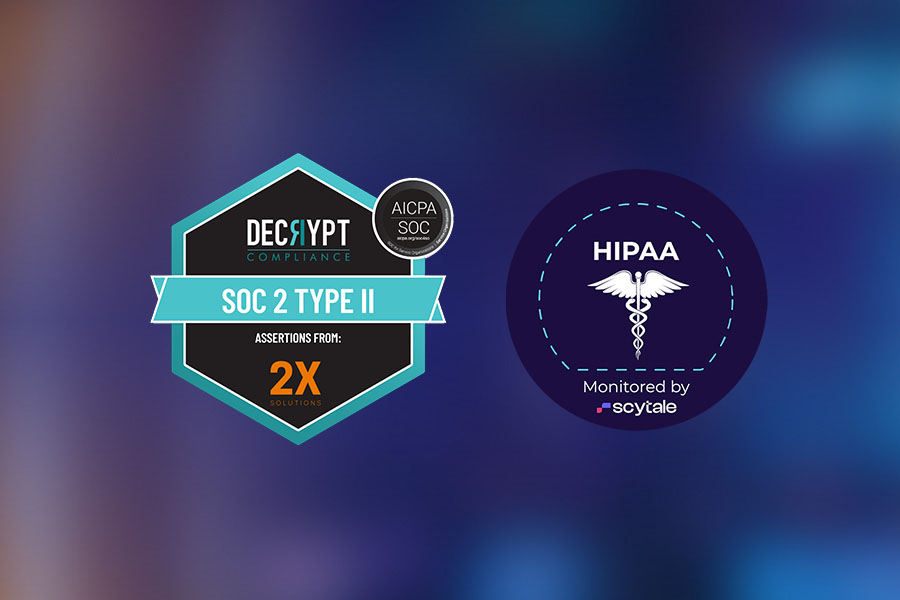Some technologies hit a level of advancement and stop evolving. Others, though, never seem to reach a ceiling. For example, Moore’s Law regarding evolutions on microchip transistors is still relevant after several decades.
The evolution of conversational AI appears to be one of those technologies that has no indication of bumping into a ceiling anytime soon. It continues to improve at a staggering rate, becoming more efficient and mimicking more human-like conversation.
Understanding exactly how to take advantage of conversational AI to deliver the customer service solutions you need can be a challenge without the right background knowledge. Learn more about your options for taking advantage of AI-powered virtual assistants using conversational AI.
Understanding Conversational AI
Conversational AI involves using artificial intelligence to mimic human conversation in real-time. The interaction should feel highly natural to the human.
Definition and Role in Modern Technology
The role of conversational AI in modern technology includes:
- Shaping the future of customer service
- Helping customers find information and answers to their questions faster
- Analyzing user interactions for data that aids in future interactions
- Providing your human team members with potential sales leads
- Supporting your customers in their native languages
- Naturally scaling to match the number of interactions required
Historical Journey: From Simple Chatbots to Advanced Systems
One of the easiest ways to understand the evolution of conversational AI is to consider its use with modern chatbots.
Older chatbot technology relied on decision trees and strict rules to deliver responses to customers. Such interactions often did not satisfy the customers’ needs.
Modern chatbots using conversational AI have a far better chance of delivering the desired information by fully comprehending the customers’ requests.
Early Steps and Limitations
In the early days of deploying conversational AI, interactions did not feel natural. The technology struggled to fully comprehend the intent of the human’s questions. Its scripted responses often led to a dissatisfactory interaction.
Rule-Based Systems and ELIZA
The first chatbot, called ELIZA, debuted in the 1960s. It wasn’t technologically advanced, but it spurred interest in natural conversation with computers.
ELIZA relied completely on rule-based systems to create responses to humans who interacted with it. If often repeated the human’s statement back, giving it the illusion of natural conversation.
Restricted Natural Language Processing Capabilities
After early attempts to build on ELIZA, researchers gave up on Natural Language Processing (NLP) until the late 1980s. Improved computing processing power by the 1980s enabled more powerful decision trees. These advancements in hardware and software performance allowed NLP to perform at a level significantly higher than what ELIZA could produce.
Revolutionizing Language Processing

New technologies, including machine learning (ML) and deep learning (DL), allowed a significant leap forward in the evolution of conversational AI.
Introduction of Machine Learning and Deep Learning
The ideas of machine learning and deep learning even predate ELIZA. However, the ability to actually use them only occurred in the past few decades when computing and processing power caught up to these ideas.
ML uses predictive analytics to allow computers to find answers without the need for specific programming (like what occurs with decision trees). DL involves the way computers process the data they find. Both technologies attempt to simulate the way humans find and process data, which is a key step in making conversational AI seem more natural.
Enhanced Understanding and Generation of Language
Decoding human speech through NLP was the biggest step in the evolution of conversational AI. With the computing power now available to take full advantage of ML and DL, NLP’s ability to create natural conversations improved. NLP now could understand the intent of human language more frequently and could generate responses that matched that intent.
Rise of the Virtual Assistants
As conversational AI continued to improve, it spawned virtual assistants. These voice assistants now are part of everyday life for many people.
Platforms Like Siri, Alexa, and Google Assistant
The rise of voice assistant platforms in the early 2010s introduced consumers to the power of conversational AI.
Voice assistant platforms like Siri, Alexa, and Google Assistant seem commonplace now. At the time, though, their ability to comprehend what someone was saying and respond accordingly was a key step forward in the acceptance of technologies like conversational AI. They made people feel more comfortable talking to a computer and using automated customer service options.
Integration With Smart Homes and the Internet of Things
The introduction of smart home products and the idea of the Internet of Things (IoT) improved further on the acceptance of voice assistants. Smart home products made people more comfortable relying on technology for communications and data gathering. They showed the ability of technology to gather data and act on it in the background without the need for human intervention.
Conversational AI in Customer Service

As people became more comfortable using virtual assistants, the next natural step in the evolution of conversational AI was using it for customer service.
Leveraging NLP for Efficient Query Resolution
The technology driving NLP continues to improve its ability to comprehend what the human is actually asking. NLP doesn’t focus only on the actual words. It comprehends the words in the context of the overall query, giving it the best chance of fully understanding the conversation.
This is a key factor in using conversational AI to transform customer service. When customer service technology can satisfy the customers’ needs faster and more accurately, customers are more willing to use it.
Reducing Response Times and Increasing Satisfaction
With conversational AI answering customer queries, response times are much faster. Customers don’t become frustrated waiting for a customer service representative to answer their call. They receive fast responses and feel more satisfied with the company overall.
Handling High Volumes of Queries Seamlessly
In the past, customers had to wait hours to finally connect with a representative during a company’s busiest times of day. But conversational AI handles high volumes of calls and queries seamlessly. Customers receive fast responses to their queries regardless of the number of other calls or virtual questions.
Integrating With CRM Systems for Contextual Conversations
Modern AI technology connects seamlessly with a company’s CRM system to gain information about a customer as soon as it connects to them. This gives the AI context for the questions or topics the customer wants to discuss, allowing them to provide more relevant answers.
Transforming Industries With AI Conversations

A key evolution of conversational AI happening now is the use of this technology in specific industries for specific purposes.
Applications in Healthcare (Virtual Assistants and Diagnosis)
Using conversational AI in healthcare could involve things like using virtual assistants to make simple diagnoses. The virtual assistant using conversational AI can call upon past medical records for the patient and use this historical data to aid in any diagnosis.
Should conversational AI determine that the patient’s problem needs additional intervention, it can pass these more difficult calls to a human.
Education Reimagined (Personalized Learning and Support)
Conversational AI could completely change the landscape of education. Rather than having a teacher try to focus on a couple dozen students simultaneously, conversational AI could deal with each student’s needs. It could deliver educational tasks personalized to the student’s capabilities.
Should a student have a problem that’s beyond the conversational AI’s ability to solve, it could have the teacher step in and help.
Business Operations Streamlining (Internal Communication and HR Chatbots)
Conversational AI could play a big role in small business operations by making internal communications more efficient. It could collect data for all participants in preparation for a meeting, for example, ensuring everyone is on the same page.
For an HR department, conversational AI could answer employee questions about sick time or other benefits without having to involve a human.
Financial Services (Automated Financial Advice & Fraud Detection)
Conversational AI can be trained on the warning signs of fraud within the finance industry. For example, it could learn to identify when a caller is posing as a customer of the financial institution.
In the future, conversational AI may even be able to provide financial advice based on datasets and trends.
E-commerce (Personalized Shopping Assistance & Customer Engagement)
Engaging customers throughout an e-commerce experience can improve the chances of landing a sale. Conversational AI could help personalize a customer’s shopping experience as they move through the site and browse products. The AI could make recommendations based on the user’s shopping history and alert the customer to deals or discounts.
Telecommunications (Network Troubleshooting & Customer Interaction)
In the telecommunications industry, conversational AI could help troubleshoot basic network issues, saving more complex issues for experienced support professionals. AI could help break down a customer’s problem and suggest potential solutions before passing it on to a human for support.
Travel and Hospitality (Personalized Travel Planning & Guest Services)
Many individuals have already begun using ChatGPT and other AI tools to plan trips. For organizations in the travel and hospitality industry, conversational AI can provide tailored assistance to plan trips and vacations while incorporating the company’s services into the package. Providing this feature could convince a potential customer to choose a company over another.
Future Horizons and Challenges

The evolution of conversational AI continues to move forward. For example, technologies like sentiment analysis help chatbots and virtual assistants detect the emotion behind human requests and conversations.
Integration With AR and VR Technologies
One potential next step in conversational AI’s evolution is the use of augmented reality (AR) and virtual reality (VR). Virtual assistants and chatbots could start mimicking the look of an actual human when conversing with clients.
Such technology could make the interaction seem even more natural and realistic. By using AR and VR, the virtual assistants may even be able to start interpreting gestures and facial expressions from the human customer, enhancing their level of understanding.
Exploring Multimodal Conversational Interfaces
Deploying multimodal conversational interfaces with conversational AI offers a step forward in realistic conversations. Humans rely heavily on non-verbal cues when conversing with each other. If the virtual assistant using conversational AI can begin interpreting those cues accurately, it can deliver more lifelike and accurate responses.
The virtual assistant would have access to the cues and context regarding the conversation and the intent of the human. Having extra information always improves the performance of conversational AI.
What 2X Solutions Can Do for You
Understanding new technologies like AI can be a challenge when your focus is on other areas of your business. Ignoring AI’s potential impact — especially its ability to generate natural conversations — could put your business at a competitive disadvantage.
You can trust 2X Solutions to provide advice and guidance on determining how changes in conversational AI could benefit your business. Some of the areas where we can help include:
- Explaining conversational AI in a way that makes sense, no matter what level of technology background you have.
- Determining how to implement conversational AI to benefit your particular business.
- Giving your employees the knowledge and skills they need to fully incorporate conversational AI.
Count on 2X Solutions to keep a close eye on advancements in conversational AI. We’ll provide advice about when incorporating new AI technologies will benefit you. For help with understanding the evolution of conversational AI and how to take advantage of it, reach out to 2X Solutions and request our e-book today.






